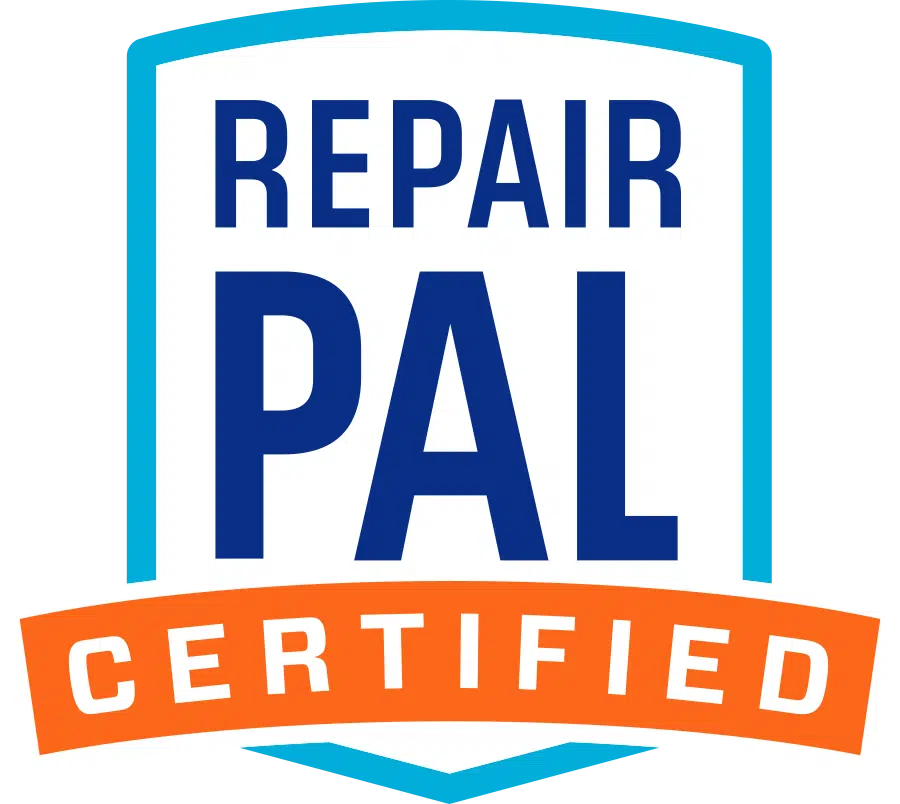What Does Code P0137 Mean?
- P0137 definition: O2 Sensor Circuit Low Voltage (Bank 1, Sensor 2)
- Issue Severity: MODERATE – Extended driving with this code may cause internal engine damage.
- Repair Urgency: Get this code fixed as soon as possible to avoid emission system and catalytic converter damage.
- Diagnosis: Driving with trouble code P0137 is acceptable but only for a short period of time. Driving with this code for an elongated period of time could result in greater engine damage if it is being caused by a lean air/fuel ratio.
- Common Reason: Code P0137 is often related to a bad O2 Sensor.
Oxygen sensor 2 is the downstream oxygen sensor, sitting in the exhaust system after the catalytic converter. It measures the air/fuel ratio coming out of the catalytic converter to ensure the catalytic converter is functioning properly. The powertrain control module constantly adjusts the air/fuel mixture based on input from the oxygen sensors. The downstream oxygen sensor (sensor 2) should produce a steady voltage of approximately 0.1-.95 volts if the catalytic converter is doing its job properly and there are no problems with the engine’s air/fuel ratio. When trouble code P0137 is set, this indicates that there is low voltage (roughly 450 millivolts or less) for more than 20 seconds coming from the downstream oxygen sensor.
P0137 Causes
There are many potential causes of code P0137.
- Faulty oxygen sensor (most common)
- Short on voltage to O2 circuit
- Exhaust leaks
- Fuel pressure low
- Engine running lean
P0137 Symptoms
- Check Engine Light
- Possible exhaust leaks
- Exhaust odor
- Vehicle running rough
- Lack of power
- No adverse conditions in some cases
How Do I Fix Code P0137?
With an oxygen sensor fault, the first step is to get it diagnosed to figure out what is causing the problem.
If your vehicle has this fault and you’re not comfortable diagnosing this issue at home, we recommend finding a RepairPal certified shop nearby to pinpoint the problem and give an accurate estimate for repairs.
These shops can not only help you figure out what’s going wrong before you waste time and money on the wrong parts, but they also offer a minimum 12-month, 12,000-mile warranty and stand behind all their estimates with guaranteed fair pricing.
> Find a RepairPal Certified Shop Near You
How Much Does It Cost to Fix Code P0137?
P0137 can be caused by anything from a failed O2 sensor to faulty wiring to leaks in the exhaust. It’s impossible to give an accurate estimate without properly diagnosing the issue first.
If you take your car to a shop for diagnosis, most shops will start with an hour of “diag time” (the time spent in labor diagnosing your specific issue). Depending on the shop’s labor rate, this typically costs somewhere between $75-$150. Many, if not most, shops will apply this diagnosis fee to any required repairs if you have them perform the repairs for you. From there, a shop will be able to give you an accurate estimate for repairs to fix your P0137 code.
Possible Repair Costs for P0137
For error code P0137, one or more of the below repairs may be needed to solve the underlying issue. For each possible repair, the estimated cost of repair includes the cost of the relevant parts and the cost of labor required to make the repair.
- Oxygen sensor $200-$300
- Exhaust repair $100-$200 (if welded to repair)
- Fuel Pump $1300-$1700
- Fuel pressure regulator $200-$400
- Vacuum leak $100-$200
DIY Steps to Diagnose Code P0137
Engine code P0137 could be caused by a number of things, including a bad oxygen sensor, faulty wiring, or an exhaust leak. If you’d like to try to fix code P0137 at home without throwing money at parts, you’ll want to follow the steps below for proper diagnosis. Keep in mind this is an intermediate-level diagnosis and repair and not recommended for beginners. Diagnosis requires more specialized equipment beyond what the FIXD Sensor can provide and it can be a time and labor-intensive process for inexperienced DIYers.
DIY difficulty level: Intermediate
This repair requires mechanical knowledge and is not recommended for beginners.
Tools/parts needed (our top picks from Amazon):
- FIXD
- Multimeter
- Fuel pressure gauge
- Spray bottle of water
STEP 1: CHECK O2 SENSOR WIRING
Visually inspect the O2 sensor wiring and harness connections for any corrosion in the connections or for any physical damage that might be present. Repair as needed.
STEP 2: CHECK FOR EXHAUST LEAKS
Look for any exhaust leaks between the engine and the O2 sensor. That includes the exhaust manifold or headers, the area around the turbocharger if your vehicle has one, flex pipes, and the catalytic converter(s). Repair as needed.
STEP 3: USE FIXD TO CHECK O2 SENSOR VOLTAGE
Warm up your engine. Using FIXD Live Data, look at your O2 sensor (bank 1, sensor 2) voltage. It should read between 0.1-0.95 volts. If it is lower than this, you most likely have a faulty O2 sensor. To be sure, continue diagnosis.
STEP 4: CHECK FUEL PRESSURE
Using a fuel pressure gauge, check the fuel pressure and compare it to your vehicle specification. Too low fuel pressure can cause the engine to run lean, causing the O2 sensor to read low voltage as described in step 3. In this case, the sensor is accurate, and the lean running condition needs to be fixed.
STEP 5: CHECK FOR VACUUM LEAKS
Conduct a visual and audible inspection of the vacuum lines and any intake connections to make sure there are no signs of disconnection or outside air leaks. This includes the intake pipe between the throttle body and mass air flow sensor. Listen for a hissing sound coming from these lines, which can be a sign of a vacuum leak. Spray water over intake area and listen. If the engine briefly stumbles and runs rough, then recovers, there is most likely an intake leak. Concentrate the water stream on different hoses and gaskets until you find your leak.
Common P0137 Diagnosis Mistakes
Replacing the O2 sensor without checking for any exhaust leaks or loose connections.
Still Need Help Fixing Code P0137?
If you’ve followed the steps above and are still experiencing check engine code P0137, please contact the FIXD Mechanic Hotline if you’re a FIXD Premium subscriber or find a RepairPal certified shop near you to get the right repairs at a fair price.
Popular Engine Codes p0420 code p0172 code p00171 code p0128 code p0300 code p0456 code p0430 code p0442 code p0455 code p0113 code
Fixed It But The Check Engine Light Is Still On?
Check engine light sometimes need to be reset manually, check out our article:
How to Reset Your Check Engine Light | 4 Ways To Clear It (With or Without a Scanner)

Recovering autocross and track day enthusiast. Once turned a VW Jetta into a pickup truck. Lives in a van down by the river. Dream car: 2001 Subaru WRC rally car.















